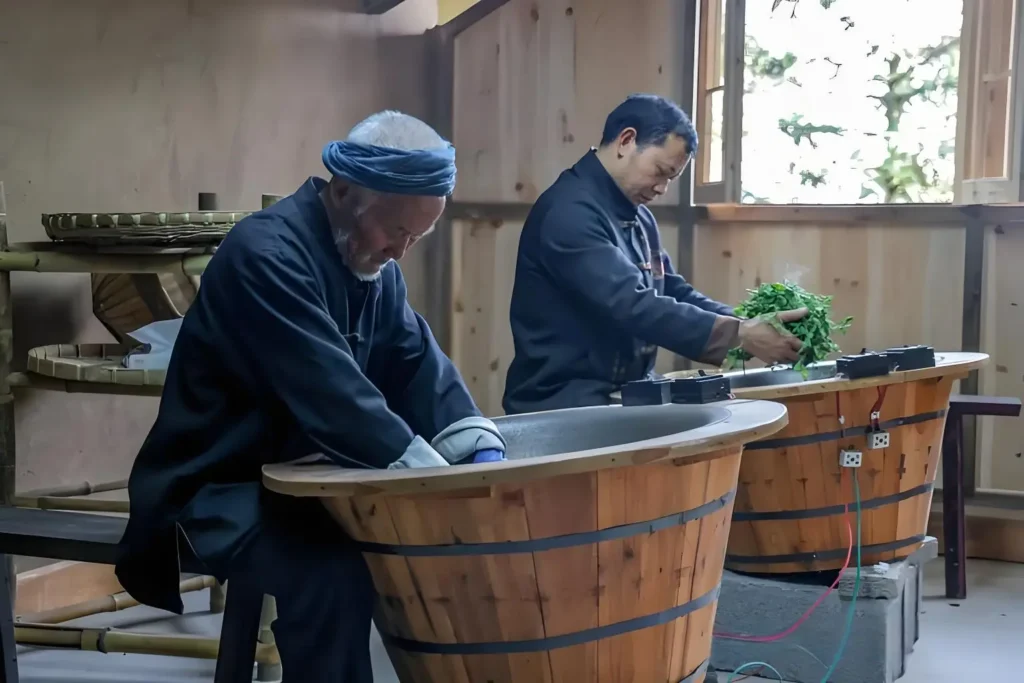![]()
Traditional And Healthy Tea For You

——Discover the Birthplace, Terroir, and Ancient Wisdom Behind the Leaf
Tea flows through Chinese veins as cultural DNA—a spiritual bond connecting past and present. From Shennong’s mythical herb trials to Lu Yu’s Classic of Tea (the world’s first tea encyclopedia), this leaf evolved into a philosophy. In China, tea rituals define hospitality, self-cultivation, and poetic inspiration. Now, as global wellness trends surge, Chinese tea bridges East and West with its unique flavors and health legacy.
Join us in exploring tea’s origins, sacred growing regions, and science-backed benefits. By the end, you’ll understand why Camellia sinensis became humanity’s second most-consumed beverage after water.
China’s tea story begins 5,000 years ago. The Shennong Ben Cao Jing (神农本草经) records: “Shennong tasted 100 herbs, encountered 72 poisons daily, and was saved by tea.” This ancient text reveals tea’s early medicinal role.
In 760 CE, Lu Yu’s The Classic of Tea (《茶经》) systematized tea cultivation and ceremony—a work so pivotal it’s displayed at the British Library. Guizhou’s Miao ethnic ballads sing: “Shennong sowed tea seeds; thunder gods sprouted new buds”—oral histories aligning with archaeological proof of China’s Southwest as tea’s cradle.
Legend says Emperor Shennong, while testing medicinal herbs, collapsed from poisoning. A divine tea leaf fell into his mouth, detoxifying his body and sparking mental clarity. This myth, still recounted in tea villages, birthed tea’s dual identity as healer and cultural icon.
164万-Year-Old Fossils: In 1980, Qinglong, Guizhou yielded fossilized tea seeds dated to 1.64 million years—the world’s oldest tea relic.
3,200-Year-Old Living Tree: The “Jinxiu Tea Ancestor” in Lincang, Yunnan still thrives, its trunk requiring three adults to embrace.
2,100-Year-Old Tea Residue: Han Dynasty tombs in Xi’an contained tea leaves certified by Guinness as the oldest consumed tea.
6,000-Year-Old Cultivation: At Tianluoshan, Zhejiang, Neolithic tea roots and pottery tools rewrite tea’s domestication timeline.
China’s prime tea zones—Guizhou Plateau, Yunnan, Sichuan Basin—lie along the 30°N latitude, sharing conditions with California’s wine country:
15-26°C annual temps
1,200mm+ rainfall
Acidic red soil rich in zinc/iron
This terroir creates the ideal amino acid-to-polyphenol ratio for balanced flavor.
Meitan Cuiya (Guizhou): Jade-colored buds handpicked pre-Qingming, releasing chestnut aromas. Recognized by EU Geographical Indication.
Pu’er (Yunnan): 20m-tall ancient trees produce fermented tea with lipid-lowering properties.
Mengding Huangya (Sichuan): “Sun-kissed” yellow tea with roasted chestnut notes, praised by Tang poets.
Polyphenols: Antioxidant power 18x stronger than vitamin E (Harvard Study)
L-Theanine: Boosts focus by 25% via alpha brainwaves (NIH Report)
Catechins: Reduce cardiovascular risks by 25% with 3 daily cups (Mayo Clinic)
When you sip Chinese tea, you’re tasting:
Guizhou’s mist-cloaked mornings
Sichuan’s monsoon-kissed slopes
Yunnan’s primordial rainforest breezes
This isn’t just hydration—it’s a 5,000-year wellness ritual simplified for modern life. No ceremony required; just boiling water and mindfulness.
Start your tea journey with our Single-Origin Collections, each batch traceable to its ancestral garden.

Purchase any single product
